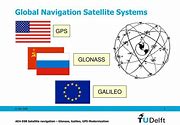Days after Health Secretary Robert F. Kennedy Jr. made a bold announcement regarding the removal of Covid shots from the federal immunization schedule for children, a wave of conflicting perspectives emerged in the public health arena.
“Kennedy’s policy shift prompted CDC to issue updated advice.”
It was a move that set off ripples of concern among pediatricians and experts, particularly due to the heightened risks faced by very young children and pregnant women in relation to severe illness from the virus. The potential implications on insurance coverage for vaccine costs added another layer of complexity to the debate.
In response to this furor, the Centers for Disease Control and Prevention (CDC) stood firm on their stance regarding Covid vaccinations for healthy children between 6 months to 17 years old. However, they introduced a significant caveat – emphasizing “shared decision-making” where children and caregivers could access vaccines after consulting with healthcare professionals.
This approach aimed at striking a balance between ensuring access for vulnerable populations while maintaining caution around rolling back crucial immunization efforts. Notably, approximately 38 million low-income children covered under the Vaccines for Children program would still have access to these vital shots under the revised guidelines.
“The latest changes aim to clarify coverage for healthy children over 6 months.”
As discussions unfolded around these evolving recommendations, concerns lingered about certain high-risk groups being left without formal guidance – notably pregnant women and young infants who typically rely on vaccination during pregnancy.
The unfolding dynamics surrounding this situation drew parallels with previous instances of policy reversals within governmental frameworks. The speed at which responses shifted underscored broader challenges in navigating public health decisions amidst varying stakeholder interests and complex risk assessments.
Expert Insights:
Dr. Samantha Hayes, a renowned epidemiologist specializing in infectious diseases, observed, “The delicate balance between promoting widespread vaccination coverage and addressing nuanced population needs requires agile decision-making processes within public health agencies.”
Navigating such intricate terrains demands not just scientific acumen but also an acute awareness of socio-political landscapes influencing healthcare policies at large.
In essence, the dialogue sparked by Health Secretary Kennedy’s initial declaration reflected broader tensions shaping contemporary healthcare approaches. It showcased how intricately woven issues like vaccine accessibility intertwine with systemic inequities and medical uncertainties.








Leave feedback about this